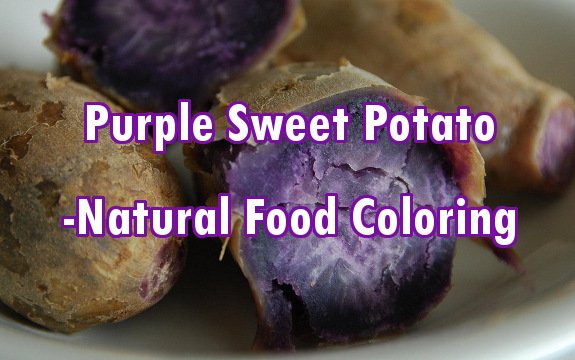Want Natural Food Coloring? Add These Purple Sweet Potatoes to the Line Up

 Food manufacturers use about 15 million pounds of artificial colors into the food supply every year, according to a report from the Center for Science in the Public Interest (CSPI). These colors have been implicated in everything from allergies to behavior disruption and increased cancer risk. Fortunately, some food producers are looking elsewhere, at natural alternatives, and the purple sweet potato is looking like just one of the newest options.
Food manufacturers use about 15 million pounds of artificial colors into the food supply every year, according to a report from the Center for Science in the Public Interest (CSPI). These colors have been implicated in everything from allergies to behavior disruption and increased cancer risk. Fortunately, some food producers are looking elsewhere, at natural alternatives, and the purple sweet potato is looking like just one of the newest options.
NPR reports that the “little-known” and “little-grown” purple sweet potato could be used to develop a plant-based dye that is both safe and pretty. Extracting the pigment to be used in dyes, food chemist Stephen Talcott with Texas A&M University, says the vegetables are unique and have notable color stability.
“Our work with purple sweet potatoes has been going for a couple of years, partially in response to a trend within the food industry to move away from synthetic colors — primarily shades of red,” he told attendees in a press conference at the American Chemical Society National Meeting & Exposition. “Purple sweet potatoes are a great alternative.”
His hope is that consumer demand will push food producers to look to natural color alternatives at an increasing rate, which will ultimately boost purple sweet potato production. Right now, not many farmers are producing the purple spuds, making the color quite costly at $136 per pound.
A recent study found that many foods marketed to children, especially breakfast cereals, have some of the highest levels of ADHD-causing food coloring. And while an increasing number of people, and especially parents, seek out foods without artificial colors, scientists aren’t convinced they pose problems.
A 2011 FDA panel noted that there wasn’t enough scientific data to implicate food dyes in childhood hyperactivity. This, despite many parents noticing attention and behavioral changes when removing the dyes from their children’s diets.
As consumers become more cognizant of the risks of toxins in our food, there will be increasing pressure on food makers to conform. We see it in those that are phasing out GMOs despite not acknowledging that genetically modified ingredients pose any health risks.
Currently, foods like beets and elderberries are being used as natural color sources. Other colorings deemed “natural”, however, may not be so desirable like caramel color and cochineal (a red dye derived from insects). Dannon uses (or has used) crushed beetles to color its yogurts, for example.
